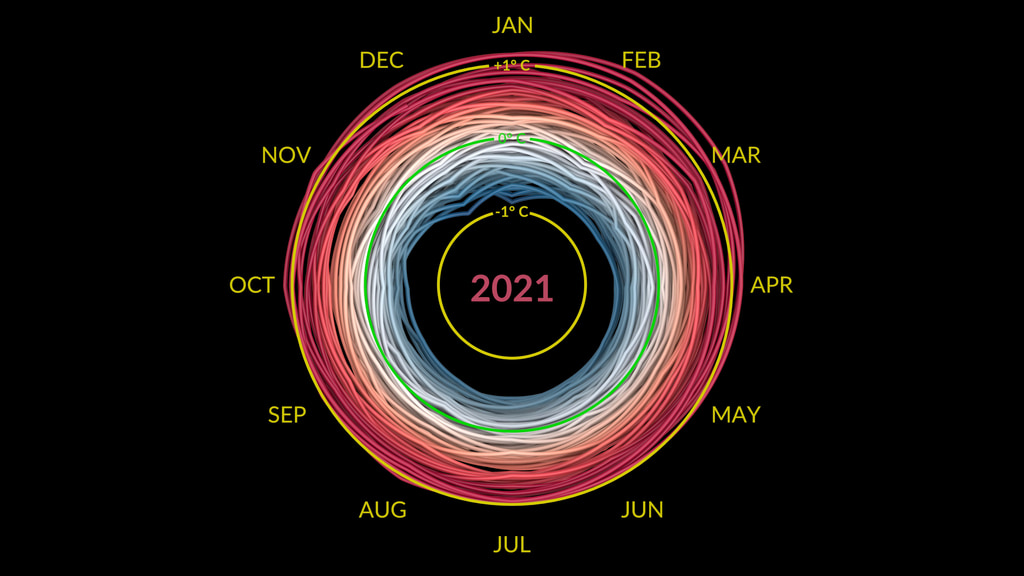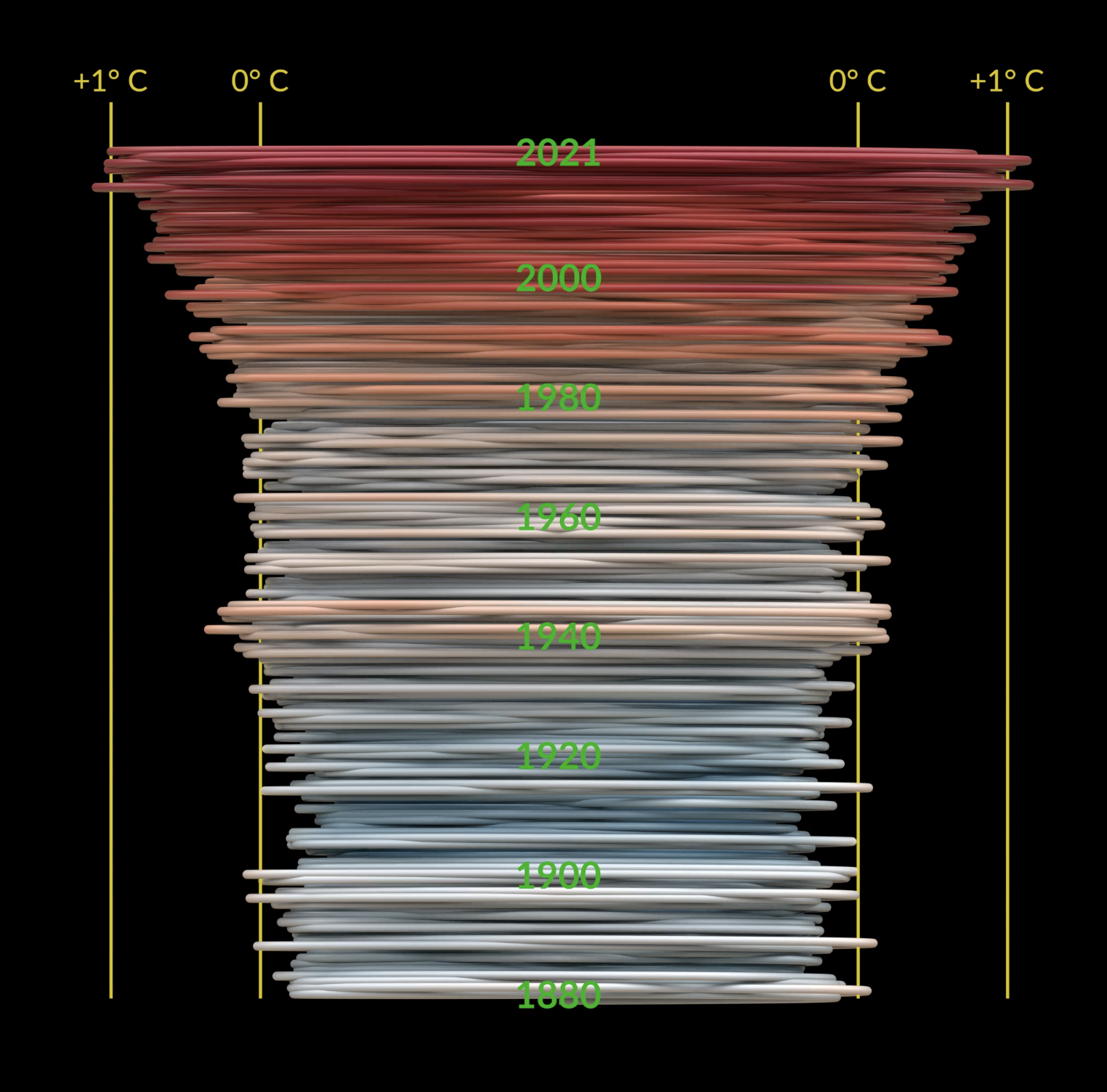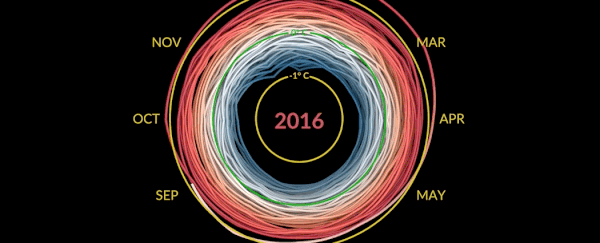Climate change is spiraling out of control, and that's never been easier to see.
A winding coil of global temperatures spanning 1880 to 2021 is practically a maelstrom of menace.
The animation is based on data from NASA's GISS Surface Temperature Analysis and was designed by climate scientist Ed Hawkins, who is known for putting together the original climate stripes.
 The GISTEMP climate spiral 1880-2021. (NASA's Scientific Visualization Studio)
The GISTEMP climate spiral 1880-2021. (NASA's Scientific Visualization Studio)
Hawkins, who works at the University of Reading in the United Kingdom, is interested in organizing climate data in ways that are easily understood and remembered by the public.
In 2016, his first 'climate spiral' went viral online. The way the animation represented our current climate crisis was beautifully simple and terrifyingly stark. It was even used in the opening ceremony of the Rio Olympics.
Now, the spiral is back, and after just five years, its gaping mouth is wider than ever.

With each month of each year that rolls by on this circular calendar, a revolving line of global temperature surface data is logged.
As the years begin to stack up, the line of data creates a sort of slinky-like shape. Come mid-nineteenth century, however, the line starts to spread outwards, creating more of a tornado.
By the turn of the century, the belt is pushing outwards with alarming velocity. Between 2016 and 2021, it crosses the yellow boundary that represents one degree of warming several times.
In July of 2021, the Northern Hemisphere experienced the world's hottest month ever recorded. You can see it at roughly six o'clock on the climate spiral.
The recording is unprecedented for now, but it will no doubt have company soon enough. The last nine years are all among the hottest 10 on record. Not even a global pandemic seems to slow our trajectory down.
Turned on its side, the whirlpool of data looks ready to swallow the future right up.
 Lateral view of the climate spiral. (NASA's Scientific Visualization Studio)
Lateral view of the climate spiral. (NASA's Scientific Visualization Studio)
The spiral can be found online at NASA's Scientific Visualization Studio.
